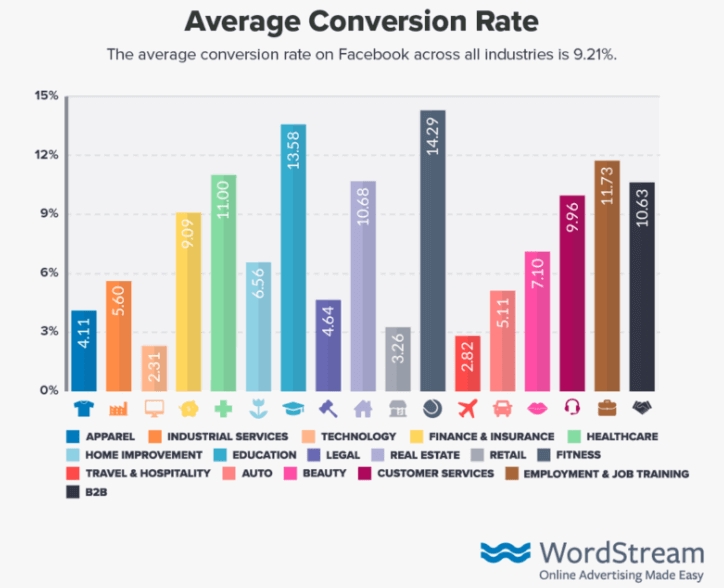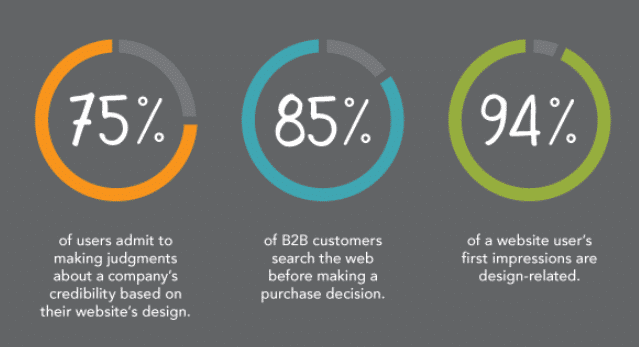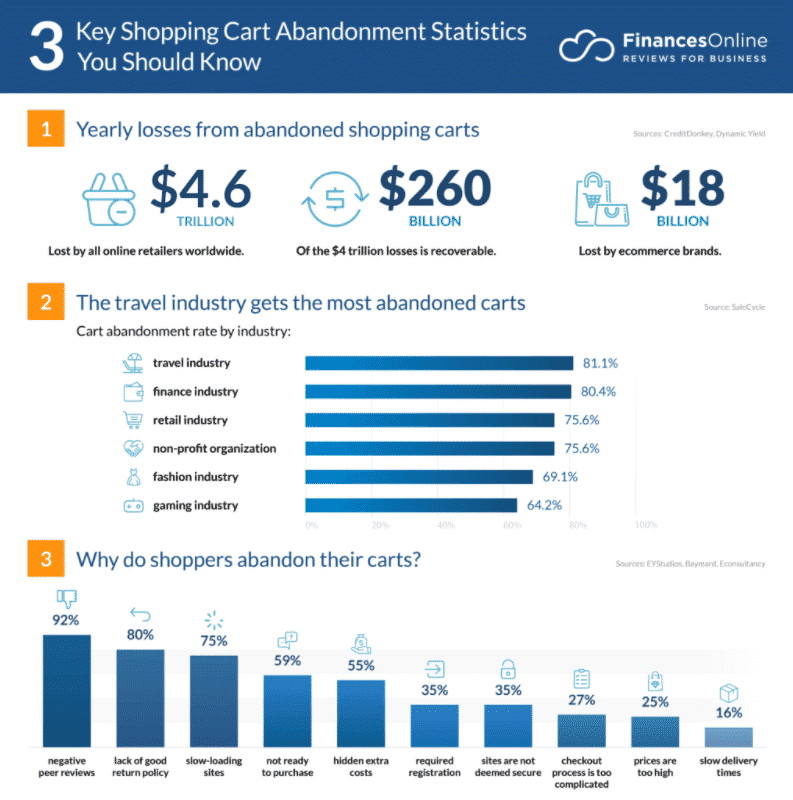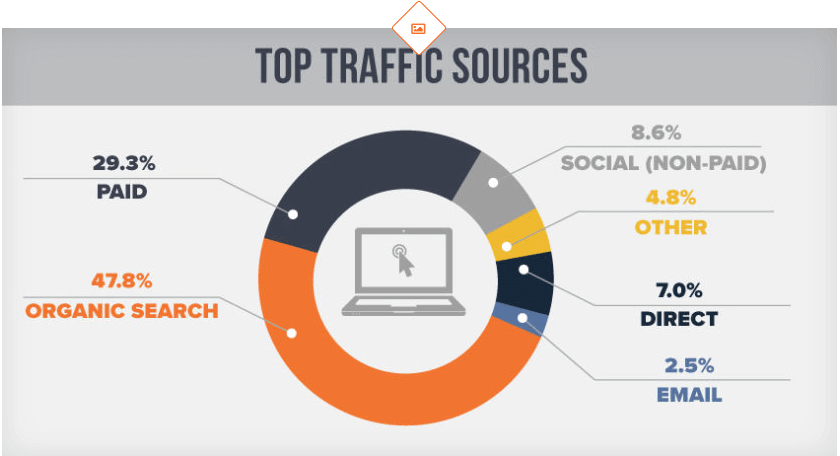That said, the E-commerce conversion rate is the number of site visitors to your E-commerce site or landing page that completes the desired action.
In other words, the conversion rate for eCommerce typically focuses on persuading prospects to take action, where each step gets them closer to making a purchase.
But conversion rate optimization doesn't apply to E-commerce only. It applies to all the business models, from the traditional brick-and-mortar to online businesses. B2B and B2C service companies also use conversion rates to check their business performance.
Subscription-based companies such as Netflix and online gaming software or in-demand video games such Book of Ra use conversion rates to gauge the effectiveness of their marketing strategies.
Understanding E-commerce Conversion Rate
In the business world, keeping your business up and running can be challenging.
You need to ensure profitability while making your products and services as competitive in the market as possible.
Before we look at the importance of conversion rate optimization, let's first understand what this term means.
E-commerce conversion rate definition
Conversion rate optimization is the process of optimizing your site to maximize the number of site visitors that take the desired action.
Conversion rate optimization seeks to increase the percentage of website visitors that take a specific action (often submitting a web form, making a purchase, signing up for a trial, etc.) by methodically testing alternate versions of a page or process. In doing so, businesses are able to generate more leads or sales without investing more money on website traffic, hence increasing their marketing return on investment and overall profitability.wikipedia
E-commerce conversion rate optimization, therefore, applies to online store owners selling physical or digital products. The conversion rates for online retail stores vary. The average E-commerce conversion rate is in the range of 2% to 4%.
But, how is the E-commerce conversion rate calculated? You divide the number of customers who converted by the total number of site visitors, then multiply by 100.
Most online retailers use this number to gauge the effectiveness of their E-commerce marketing and conversion rate strategies. That way, they can track and improve where necessary.
What to Prioritize with E-commerce Conversion Rate Optimization
Before we see how you can improve your E-commerce conversion rate, let's first understand what it takes to create a working strategy.
Not all E-commerce CRO techniques are effective, and it takes several factors to formulate one that works perfectly.
If you are like many, you want to maximize your current site traffic and generate more sales without necessarily having to acquire new customers.
This often requires optimizing your online store, polishing your content strategy, maximizing visuals and other site features. Here are some things to keep in mind when optimizing your conversion rates.
Know Your Customers

To create a winning E-commerce conversion rate optimization strategy, you first need to understand your customers. The first step is to segment your market and take note of your target demographic.
Some of the things you should understand are the factors that drive your prospects' buying decisions. That way, you can optimize your online store in a way that matches their expectations.
Once you have known your potential customers, you want to double-check your E-commerce conversion rates. More often, your leads will need some sales calls and follow-up before you can convert them to paying customers.
If you aren't conversant with your E-commerce conversion funnel, it won't be easy to optimize each of the stages for maximum sales.
Similarly, you want to know what prevents your customers from taking action once they are near the end of the conversion funnel. Is your product of poor quality?
Are your customers having issues with your site design? Or, are there reputational issues, such as lack of trust with your brand, products, or online store?
Narrow Down Your Scope
If you are struggling with low conversion rates and high churn rates, the problem could be that you are addressing a wide range of topics or products at once.

In other words, you need to sharpen your focus with well-defined site architecture and content strategy. Instead of spreading yourself too thin and covering more markets, what you want to do is limit your scope.
This isn't to say that you should only sell one product in your online store. What it means is that your marketing and content strategy shouldn't be one-size-fits-all.
Most online stores address all their customers on their landing pages instead of targeting different groups of prospects in their respective landing pages.
Avoid Annoying CTA Strategies

E-commerce conversion rate optimization is all about getting your site visitors to take a specific action.
The best way to do this is to leverage the CTA section on your landing pages, home pages, etc. However, your site visitors will only make this call if what you are offering benefits to them.
If your site visitors are about to fall for your products, it takes only one mistake to make the whole thing a complete turn-off. One such mistake is a poor design or wrong choice of wordings in your CTA section.
For instance, asking your potential customers to provide their name and email is reasonable, but when you want to know their age, profession, or income range, you'll be going way too far.
Even then, asking them their email, phone or names shouldn't be the first thing once they land on your home page. You want to introduce your businesses and convince them that they are in the right place before asking them to take any action.
Be Realistic in Your E-commerce Conversion Optimization Goals
When it comes to E-commerce conversion rates, you don't want to aim too low and hit, or to aim too high and miss.
The first option will yield unsatisfactory results, while the second will see you spend more time and resources without a corresponding return on investment (ROI).
The best way to approach goal setting is to understand your business and your customers.
Different companies or businesses have unique or perhaps varying definitions of conversion rates. Either way, the end goal is for the customers to take action and to ensure profitability in the long run.
If your conversion is to get people to buy your physical or digital product, your goal shouldn't end with the number of emails you've amassed.
Getting Started With E-commerce Conversion Rate Optimization
As we've seen earlier, the E-commerce conversion rates by industry do vary. That means the right strategy that will improve your E-commerce conversion rate may be unique to your business. How you are going to execute the strategy will also determine your level of success.
Before optimizing your conversion rate, you first want to determine a good E-commerce conversion rate that will meet your needs. You can use an E-commerce conversion rate calculator to check the performance of your online store.
That said, here are some 8 strategies that will guide you on how to increase conversion rate in eCommerce.
Conversion Rate Optimization Strategy 1: Optimize Website Speed

How fast your website loads has a huge impact on customer experience. Nobody wants to wait for minutes just so the images could load.
According to market statistics, 47% of customers expect a webpage to load in two seconds or less. Similarly, Google Research found that the average mobile web page takes around 15 seconds to load.

Before you can work on improving the site speed, you want to test it first. If your site takes more than five seconds to load, you need to compress the size of the images and reduce redirects.
Some of the best online stores such as Amazon have all maximized site speed to boost conversion rate and overall user experience. That said, site loading speed goes hand-in-hand with website design, i.e., if you want to fully optimize your site’s conversion rate.
Conversion Rate Optimization Strategy 2: Website Design
A well-designed website that's clean and lightweight gives your customers an easy time navigating your online store. Research has also shown that majority of people determine the credibility of a business by judging its website design.
A simple design is timeless and will withstand the changing trends in the website design market. This will also keep your conversion rates steady instead of fluctuating due to perceived poor taste from a section of customers.
Additionally, by making your website design simple, you maximize the number of site visitors who see the important details and content you want to showcase.
Besides making the design and layout simple, you also want to ensure it is decent and reliable. If your site looks old and outdated, your customers will become frustrated.
It will also paint a picture that the business owner isn't serious with sales or conversion rate. By making the site simplistic yet decent, you'll focus on the products and hence drive conversion rates.
The other benefit of investing in a simple and clean website design is that your site will look professional, and Google will understand it faster.
That way, your online store will see higher rankings, plus it makes a great first impression, meaning more sustained traffic over time.
To further boost your conversion rates, you want to pay attention to finer details such as the design and even color of your CTA button and the flexibility of your search bar.
These elements may seem insignificant, but they add to how memorable, professional and trustworthy your site looks.
Related: Best Key Point On How To Make An Ecommerce Business Plan This Year
Conversion Rate Optimization Strategy 3: Mobile Optimization
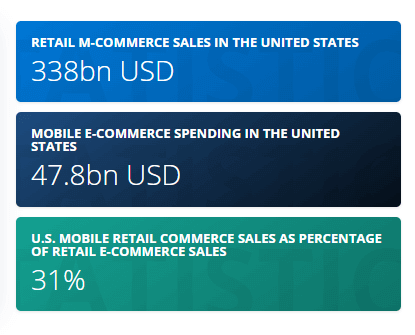
Most online stores have optimized their websites for desktop, and not many have fully optimized them for mobile. According to Statista, mobile E-commerce accounts for approximately 50% of the market.
Ensuring a mobile-first experience is therefore critical if you are to convert more site visitors into customers.
Proper navigation and on-page support is a vital aspect of E-commerce mobile optimization. By guiding your site visitors and helping them explore your store with ease, you increase your chances of boosting your conversion rates.
Last but not least is to create mobile-specific marketing campaigns. That means the discount codes, texts, and images should display perfectly on different screen sizes.
You can also pair your mobile optimization strategies with some psychological triggers such as strikethrough prices and limited-time sales.
Conversion Rate Optimization Strategy 4: Use High-Quality Images and Videos
To boost your site's conversion rates, you want to maximize your use of images and videos on the site. A rule of thumb is to ensure high interactivity with the pictures. For instance, allow the shoppers to rotate, zoom and even scale the images.

This will not only give them more freedom to compare and contrast your products, but they will also trust your brand more, hence taking the necessary action and boosting your conversion rates.
When dealing with images, you want to familiarize yourself with the different image formats such as JPEG, PNG, and GIF. Similarly, you can improve E-commerce conversion rates by using the correct image file size, i.e., resizing images so that they are optimized for web performance.
If you deal with high-end products such as designer handbags, your customers will want to view high-quality images.
This may increase the file size, hence slower loading speeds but higher conversion rates. Therefore, you should know what it takes to boost conversion rates and whether you need to make some sacrifices along the way.
Apart from images, using high-quality product videos in your E-commerce store can boost conversion rates. Some people trust videos more than images since videos give more details, boosting their confidence before purchasing a product.
Conversion Rate Optimization Strategy 5: Ensure an Easy Checkout Process
The checkout page in your E-commerce store is where conversion takes place.

If your site visitors shop products from your shop only to abandon them on the checkout page, it shows there's a problem with your checkout process. Therefore, streamlining your checkout process can help boost your conversion rates.
One way of doing this is by giving your customers more than one payment option. You should also allow your site visitors to check out as guests.
Mandatory sign-up and account registration kills conversion rates. Navigating between product pages and checkout pages should also be straightforward.
Conversion Rate Optimization Strategy 6: CRO Software and Technologies
In the modern E-commerce world, there are several tools and technologies that store owners can use to boost their conversion rates. To deal with abandoned carts, you want to use cart abandonment software to create follow-up emails and even give coupons to such prospects.
Other CRO tools include those used to test different site design aspects to see what works best. Software in this category comprises A/B testing tools, which help boost conversion rates by comparing several optimization techniques.
For instance, you can experiment with different CTA buttons, copies, and website designs and calculate the conversion rates to see what yields better results.

You can also use E-commerce technologies such as a countdown timer to get people to take action within a given time frame. Pairing this technique with limited-time sales creates a sense of urgency and can help boost the store conversion rates.
Conversion Rate Optimization Strategy 7: Make SEO Your Best Friend
Search Engine Optimization plays a critical role in boosting the conversion rates in an E-commerce store.
Unlike paid traffic that only increases site visits and clicks, organic traffic is real prospects interested in your products or brand. By maximizing your organic traffic, you can improve your conversion rates and boost sales.
However, combining SEO with conversion rate optimization requires a well-thought-out strategy. For instance, you need to focus on on-page SEO, use high-quality content and maximize the right choice of keywords in all your product pages.
More often, paying attention to all the organic SEO aspects will enhance your site experience and boost conversion rates. However, you need to first test all these SEO aspects before incorporating them into your E-commerce conversion rate strategy.
That said, SEO and Conversion rate optimization blends perfectly together. In other words, your site should be easy to find. It should also provide value to users by addressing their needs in a way that meets or even exceed their expectations.
However, improving your site's conversion rates doesn't end with SEO; you also need to keep your store competitive in the market. Below is how.
Conversion Rate Optimization Strategy: Give Some Perks
Perhaps one of the over-utilized techniques of improving E-commerce conversion rates is giving customers some discounts and other perks.
This strategy works perfectly with most customers, but it's not the silver bullet. If your products are of poor quality or your store is ranked at the bottom of search engines, then your perks won't make much of a difference as far as conversion rates are concerned.
The right way to approach perks such as giveaways and discounts is to see it as the icing on the cake.
That means the real competitive advantage is in the products you are selling and your online store. This way, you'll use discounts to boost conversion rates instead of a quick shortcut.

Another perk you could use to boost conversion rates is to leverage the money-back guarantee feature.
This strategy lessens fears and minimizes the perceived risk of customers doing business with you. This is especially the case for your first-time customers looking to make big purchases.
Why is Conversion Rate Optimization Important?
Conversion rate optimization is one of the critical priorities for most marketing and sales professionals. Ideally, optimizing your online store increases the chances of selling more products.
While there's more that goes into running successful sales, making your site attractive and user-friendly is part of the process.
That said, there are several benefits of E-commerce conversion rate optimization.
Besides obvious ones such as getting more customers or maximizing your current website traffic, there are several other advantages of improving your site's conversion rate. We've rounded some below.
It Improves the Site's User Experience
A majority of ways of boosting conversion rates also help improve site experience. By increasing the site speed and working on the site layout, design and content, you help make your site stand out from the rest.
It Lowers Your Customer Acquisition Costs

Customer acquisition cost is the amount you spend to get your active customers.
For instance, if you pay $1000 to boost your conversion rate, and in return, you get a total of 10,000 visitors, out of these site visitors, only 1000 became customers, the conversion rate becomes 10%, while the customer acquisition cost is $1.0.
If you optimize your site to boost conversion rates, the number of site visitors who become customers increases. That way, you lower the acquisition cost and hence increase the net profit.
It Improves the Efficienсy of Other Online Marketing Efforts
E-commerce conversion rate optimization makes your site more valuable to affiliate marketers. The higher the number of people who want to market your products, the higher the site visitors and customers.
This increases the number of sales, and your affiliate marketers benefit from generous commissions.
And while the typical E-commerce conversion rates are low, your top priority shouldn't be to raise these numbers high. Instead, you want to gauge your performance by the amount of revenue regenerated.
The simple reason is that you can quickly raise the conversion rates by selling more products to almost all your site visitors but at lower costs which might drive your business to losses.
If, on the other hand, you keep the pricing descent and get more site visitors to buy your products, you increase the revenue generated, hence boosting profitability.
Conclusion
The secret to running a successful E-commerce conversion rate optimization strategy lies in the ease of giving customers what they need and in a way that they want it.
In other words, if you understand your customers and know what they want, you can quickly catch their attention before your competition does.
Now that you know what it takes to improve your E-commerce conversion rates, which of the techniques above resonates the most with you? Share your thoughts in the comments.
Author’s Bio: Thomas Glare is a passionate freelance content writer, always striving to inspire others and bring insight into the endless possibilities of the modern times we are currently living. He continues to improve his knowledge and is the co-designer of a “Echtgeld Spielautomaten”.
Further Readings:



